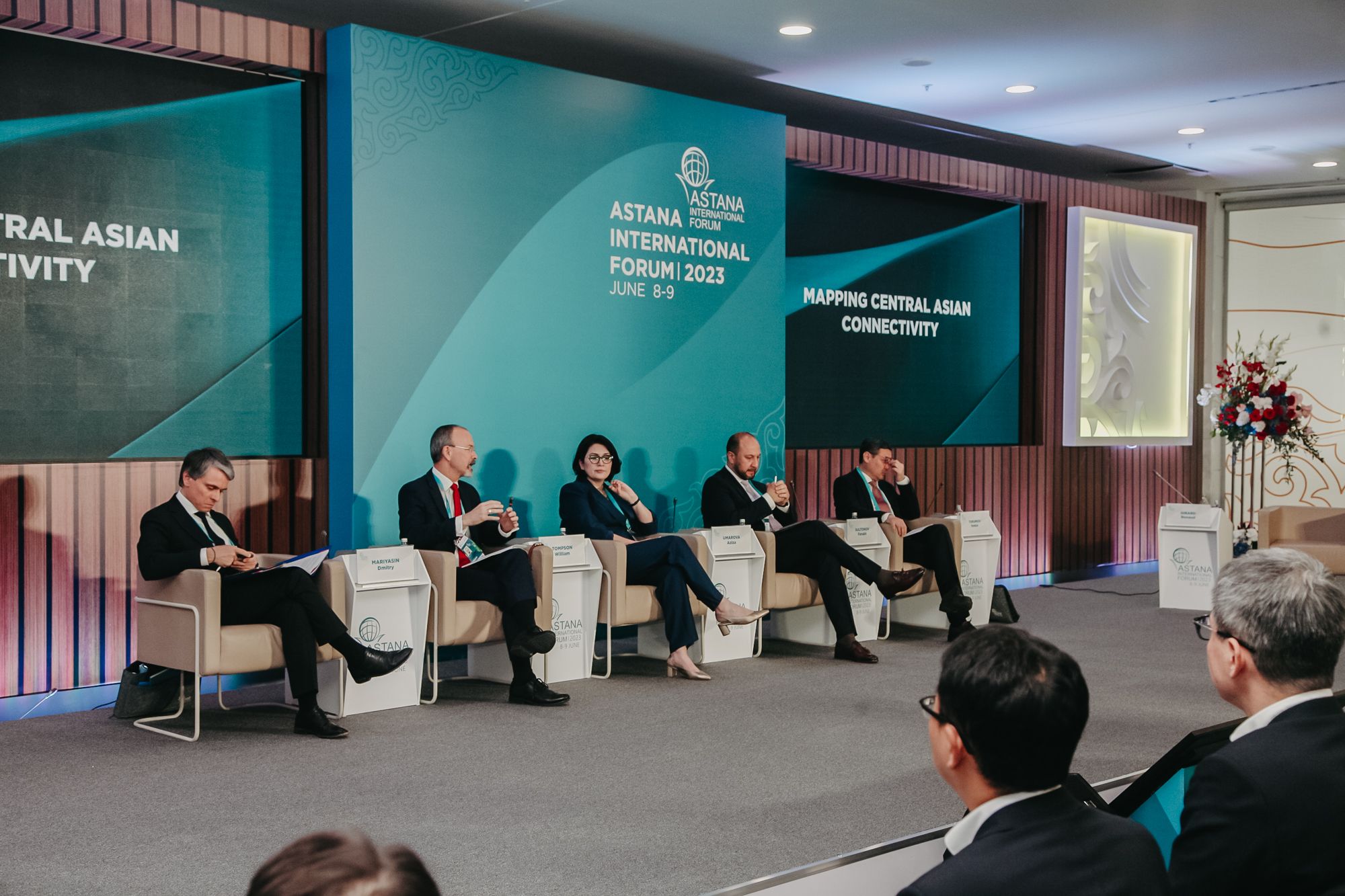ASTANA – Astana International Forum (AIF)’s panel session Mapping Central Asian Connectivity, on June 8 addressed key achievements and obstacles in regional cooperation in energy, security, economic integration, and private sector development. Experts held insightful discussions exploring new ways to improve regional engagement in resolving common challenges.

Photo credit: The Astana Times.
The participants noted that demographic shifts motivate countries to map broader connectivity mechanisms. Yerkin Tukumov, director of the Kazakhstan Institute for Strategic Studies (KazISS), provided statistics demonstrating positive dynamics in mobility, migration, human capital, and urbanization. He pointed out that three decades ago, the Central Asian region had a population of 50 million, which has recently increased to nearly 80 million.
“By 2050, the regional population is expected to reach 100 million people. The average age of the Central Asian population is represented by people under 30, who were born after the collapse of the Soviet Union. They are open to new technologies and have a critical approach to power institutions. Besides, the average lifespan in Central Asia has also improved. It is now 70 years,” he said.
“In Kazakhstan, the poverty level dropped from 65 percent in 2001 to nearly 10 percent in 2018, while the rate of urbanization is growing in the country, reaching 65 percent. People are starting to have access to better education and healthcare,” said Tukumov.
Dmitry Mariyasin, deputy executive secretary of the United Nations Economic Commission for Europe, underlined the importance of ensuring compliance with global standards in developing common approaches to resolving regional problems.
Speaking about energy, Mariyasin said that “the single Central Asian power system was one of the things in the Soviet past that worked well.”
“Rethinking energy infrastructure in Central Asia requires interconnection in a way that encompasses the electricity grid, the gas grid and makes them compatible for the new types of energy, including hydrogen,” he said.
In his opinion, the Central Asian market is too small to be sustainable on its own.
“It has to look east, west, north, and south at the same time. When we talk about corridors, we need to be realistic about it as well,” he said.
According to the Head of the Eurasia Division of the Organization for Economic Cooperation and Development (OECD), William Thomson, one of the critical things about the Middle Corridor (a transport route that starts from Southeast Asia and China and runs through Kazakhstan to European countries) is that the neighboring countries also have a role to play.
“It makes much more sense to the extent that it generates trade and doesn’t simply divert trade flows. It is about market integration, as well as about transit through the region. It has a real potential, but that potential lies in developing broader integration with Central Asia,” he said.
“We better talk about integration, and not just connectivity, transit, or transport, but economic integration,” he added.
Aziza Umarova, an expert on the political economy of the reforms and development in Central Asia, emphasized the capability of new regulations to reveal the massive potential of different industries.
“I have to say that in Central Asia, we still have a place that could benefit tremendously from new business regulations and deregulation measures. Less government engagement means more private sector engagement,” said Umarova.
In his speech about private sector development, International Financial Corporation Country Officer Farrukh Sultonov shared perspectives on similarities of the five Central Asian states in building strategies in this direction.
“There is no history in the private sector following 30 years of independence. Companies of the new generation are still in the learning process. Another interesting fact is that our region might be one of the only few in the world where the transfer of assets has never happened. We have created a specific mindset. Companies in Uzbekistan or Tajikistan are usually family-run businesses with small assets that never combined,” he said.
The panelists agreed on the need to ensure the reliability of the common regional development strategies in response to growing tensions worldwide.


